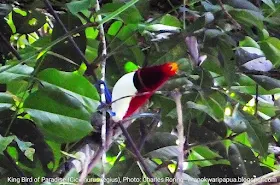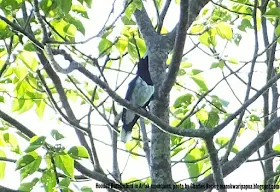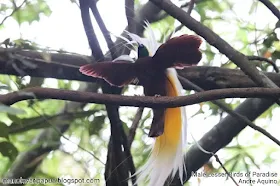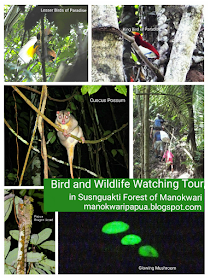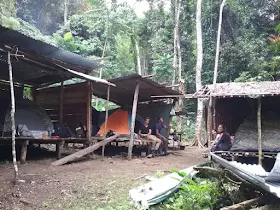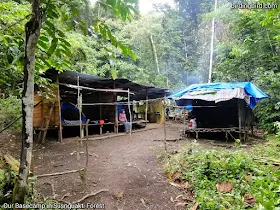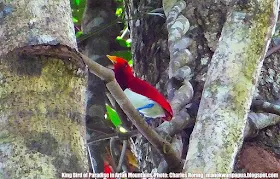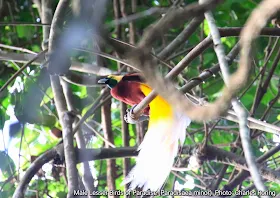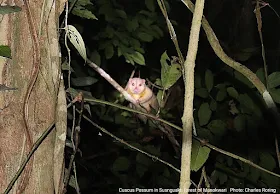I have just completed a tour with 2 Russian tourists (Elena and Stanislav) in Susnguakti forest of Manokwari. We spent 3 days/ 2 nights (24-26 January 2020) watching birds, taking pictures of insects and taking a bath in fresh water stream.
We watched Lesser Birds of Paradise, King Bird of Paradise, Magnificent Riflebird. We also saw other birds such as Black Sunbird, Brown Cuckoo Dove, Hooded Butcherbird, Black-capped Lory, Mimic Meliphaga, and Frilled Monarch.
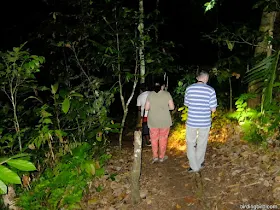 |
| Night Walk with Russian Tourists |
Watching Insects
Susnguakti was a great place for entomologists or those who want to see various species of insects. When we did night walk to find cuscus possum, we also saw stick insect, longhorn beetle, snout beetle, big spider, stink bug, Saint Andrew Cross Spider, moths, butterflies. Perhaps, there are thousands of species of insects that can be seen in the forest. Glowing Mushroom started to cover the forest floor near bamboo plants.
 |
| A cricket was coming out of a dry bamboo |
Reptiles could be observed in the forest. Forest lizard, ground skink, and green tree lizars can also be seen in the forest. On our last day of walking in Susnguakti forest, we saw a big soa-soa monitor lizard on the trunk of a big tree near the birding hut of Magnificent Riflebird.
I also organized another birding tour for Ekaterina and Ivan from 26 to 28 January in the same forest. The main target birds they wanted to watch were Lesser Birds of Paradise and King Bird of Paradise. They were happy to see them.
I also organized another birding tour for Ekaterina and Ivan from 26 to 28 January in the same forest. The main target birds they wanted to watch were Lesser Birds of Paradise and King Bird of Paradise. They were happy to see them.
